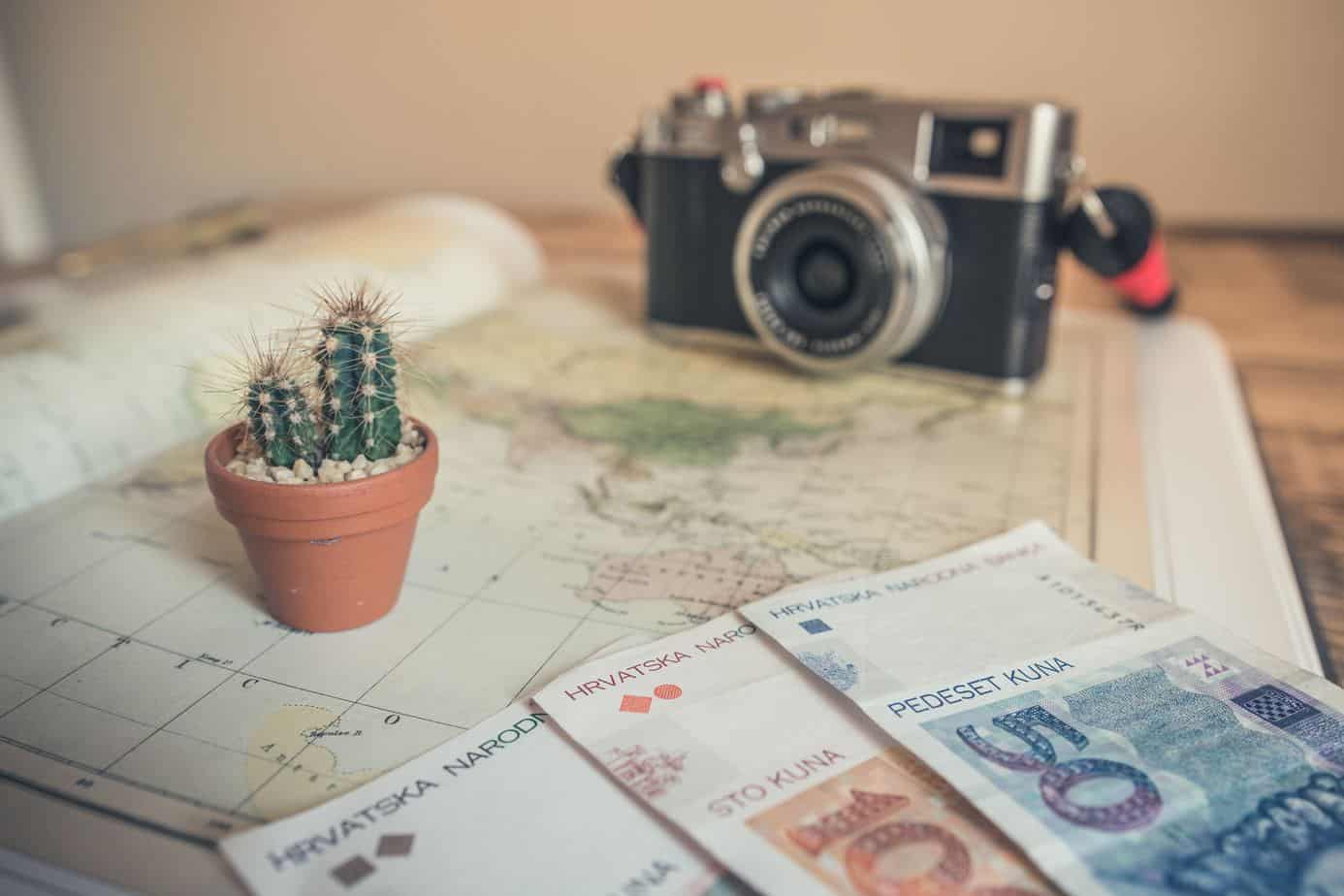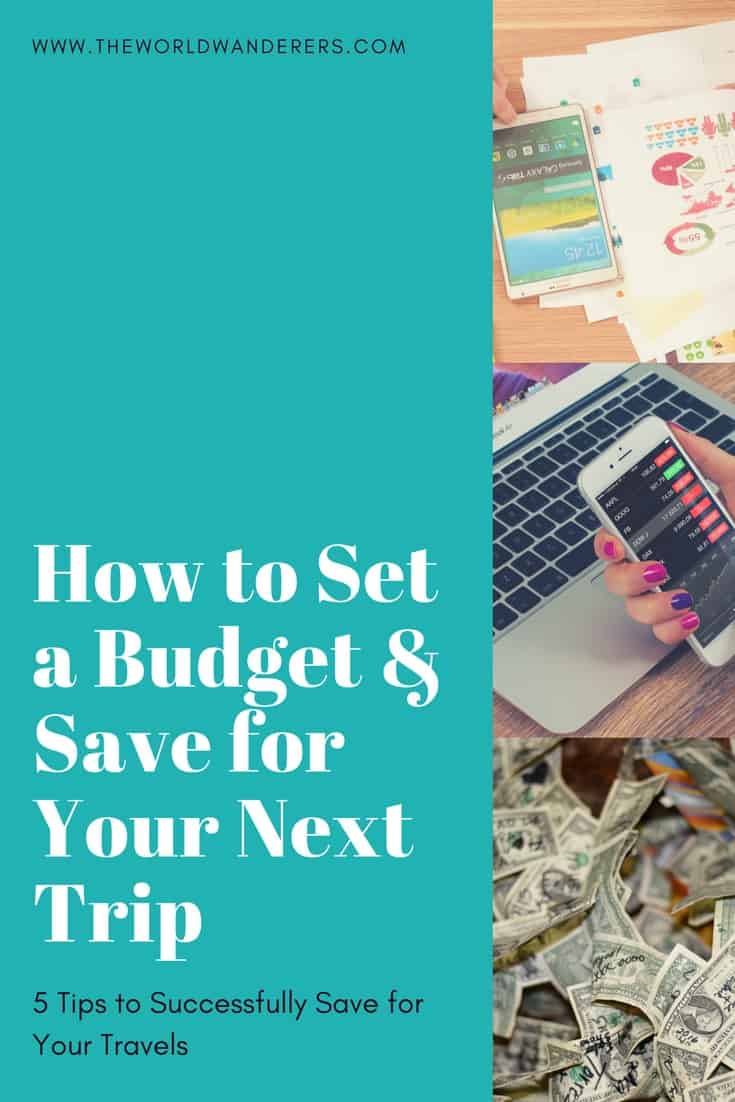One of the biggest questions we get asked is how we afford to travel, and the answer comes down to one word: budgeting.
Budgeting can be a bit of a taboo word. It can rub some people the wrong way, and it can turn others off. But, at the end of the day, a budget is basically the only way that you will be able to save enough money to travel (unless you’re a trust fund baby or something like that).
We have all heard time and time again that we need to look honestly at our after tax revenue, then calculate our expenses and subtract one from the other to see how much surplus income we have. If you’re income is high and your expenses are low, setting a budget may be easier than for those of us who don’t make that much excess income to what our monthly expenses are. Either way, this is an important step in the budgeting process because we need to understand how much money we have coming in and how much money we have coming out.
This can do a few things for you:
- It may show you that you easily make enough money to continue living your current lifestyle while saving for your upcoming trip
- It may show you that you need to cut down on your expenses in order to afford the trip of your dreams or get a second job
- It will give you perspective on exactly what you need to do to save enough money to travel
Here are 3 tips for setting a budget and sticking to it:
1. Download a budgeting app
We both use Back in Black, but there are a ton of great budgeting apps out there. Back in Black is great because it allows you to enter your revenue, your expenses and your saving goals and then it does all the math for you. Regardless, find a budgeting app that suites your needs and that you can see yourself actually using (this part is important!).
Download a budgeting app and use it honestly for a month. After that first month take a look at where you are spending your money. I keep a section for coffee and clothing purchases, because this is where I find that I spend money that I don’t need to be spending. Look at where your money is going, and set yourself a strict budget. Look at the non-negotiable places your money is going and how much that is (rent, car insurance, gas, groceries, etc), and then look at the negotiable places where your money is going and calculate how much that is (clothing, eating out, going out, entertainment purchases, coffee, etc). Look at where there is an opportunity for adjustment and set yourself a strict budget for where you spend money unnecessarily. If it’s on coffee, maybe you cut down to 2 latte’s per week instead of 5. If it’s on after-work drinks, maybe you commit to only going out on Friday’s instead of 3x per week.
Set your budget and commit to sticking to it for another month. At the end of that second month, look at how things went and re-evaluate if necessary.
2. Set a tangible goal for yourself
Another important piece to this puzzle is getting clear on how much you need to save. How long do you want to travel for? Where are you going? How much will it cost you each day to be in the place that you’re traveling?
Do some research to figure out approximately how much money you will need per day and then multiply that by how long you are traveling for.
For example, if you are planning 1 month in Europe and 1 month in SE Asia, you will want set different savings budgets for each location (SE Asia is much cheaper than Europe). I
If I was planning this type of trip I would budget the following:
$100/day for 30 days in Europe (includes 2 meals out a day, groceries for breakfast, 30 nights in a hostel or AirBnb, and daily activities and entertainment)
$35/day for 30 days in SE Asia (includes 2-3 meals out, 30 nights in a hostel, guest house or AirBnb, and daily activities and entertainment)
$1500 for round trip flights
$500 for flight between Europe and Asia
= a total of ~$6000 for your 2 month trip
If I am making $3000/month and my expenses are $2500/month, that means it will take me approximately 1 year to save for this trip with no changes to my current spending. For me, I would look at where I could save an extra $500/month (cutting down my spending or picking up a second job to help increase my income), so that I could save for my trip in half the time.
Think about where you want to go, for how long, and how much you plan to spend while you are there and then create your savings plan. My rule of thumb is to always budget higher, because it’s better to have a cushion of extra money than to run out while on the road!
3. Create a vision board
Sit down and create something that you will look at every single day that excites and inspires you to save money. A vision board can contain photos of where you are planning on traveling to, the food that you want to eat while you’re there, and the sights that you want to see. It makes your trip real and tangible and serves as a constant reminder as to why you are not spending your money elsewhere.
Make it colorful and fun, using printed photos or magazine cut outs, and then place it in a location where you will see it everyday. This is key! You must be able to see it each morning when you decide between eating breakfast out and cooking at home. You must be able to see it before you go out on Saturday night and spend $100 on drinks at a bar.
4. Turn your spending into a conscious habit
How many times have you gotten to the front of the grocery store line and the person checking you out gives you the total of your groceries, and without really registering the amount, you hand over your credit card and pay it?
Guilty.
This happens to me ALL the time. And with so many other purchases. It happens when I get coffee at Starbucks, when I buy clothes at the mall, and when I make online purchases like movies or apps or products.
If you’re going to successfully save though, you need to turn your spending in a conscious habit. This means that you are price tag conscious of everything that you purchase. Of course, you need groceries, but do you really need the fancy guacamole (guilty again)? Or, do you need the ice cream? Or the fancy brand of toilet paper?
Be conscious about where your money is going and what you are spending your money on. Make it a conscious habit to use your credit card or to spend your cash and be really mindful about where it’s going. This can be as simple as getting an Americano instead of a latte at Starbucks. A couple of bucks adds up over time, and especially if you are planning a trip to a developing country where things are much more affordable. Choosing an Americano 5x instead of a latte can be a night’s accommodation.
5. Don’t make excuses or exceptions
But my best friend’s birthday is next week and I have to get her a gift.
Great! Of course you should get your best friend a birthday gift. That doesn’t mean that you have to break the budget for her birthday gift. Get clear on how much you can spend, and then work within that budget. Get creative and think about how you can give him/her something meaningful without spending a lot. Perhaps you craft something, or put together a photo collage.
The point is that if you start making excuses or exceptions to your budget, you will NEVER save enough money. Just like living a healthy lifestyle, if you consistently make excuses or exceptions, you will never reach your goals.
Questions or comments about budgeting? Send us an email! Otherwise, happy budgeting & happy travels!
Did you enjoy this post? Please share on Pinterest with the image below!




